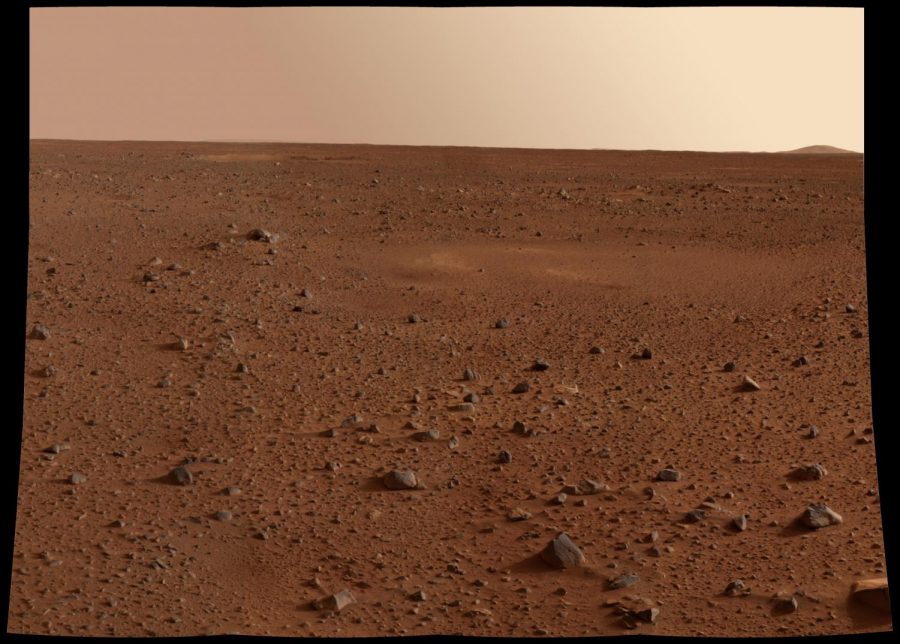NASA rep talks rover on Mars
A scientist from NASA spoke to students in April about the next Mars mission.
April 30, 2019
A NASA planetary scientist said in April that a 2020 mission to look for life on Mars is “blow-your-mind kind of stuff.”
Dr. Adrian Brown told a campus audience the July 2020 mission is important because if the robotic “rover” NASA will send to Mars finds “microbial evidence” on the planet, it could mean it evolved at the same time as life on Earth.
Brown said previous unmanned missions to Mars aimed to find evidence of water, not life. The mechanical rover, which is about the size of a compact car, will search a crater—named Jezero—that scientists believe might have at one time included a lake.
“If Mars did have life at the time when this lake was present,” Brown said, pointing to a painting of what the crater might have looked like millions of years ago, “and [was] laying down sediment at the time that the [lake] was forming … [then] that is what we are looking for with our rover.”
Brown said he believes life exists on planets other than Earth.
“We’ve got over 300 million stars in our galaxy and then there are over 300 million galaxies in the universe,” he said. “If [life] also evolved on Mars, that would mean life should be very abundant in the universe because it evolved both here on Earth and on Mars in the same opportunity.”
Brown said Jezero was difficult to reach during previous missions because older versions of rovers could not land on the planet’s dangerous rocks. Those rovers, he said, had less-accurate landing equipment than today’s machinery.
The Mars 2020 landing vehicle, on the other hand, will have a computerized map and maneuverable rockets to help guide it to a more precise landing. Brown said this level of precision will make landing on Jezero—which also is rocky—possible without damage to the rover or sensitive instruments.
“That computer and that very accurate map of the surface enables us to push ourselves as close as possible to the [crater],” Brown said. That increases our probability of a successful landing. We think we have a 95 percent chance of success.”
The landing vehicle will be accompanied by an aerial, helicopter-style drone to help it traverse difficult terrain.
Dr. Deborah Levine, an AACC astronomy professor, said Brown’s presentation intrigued her.
“I was really interested to see the progress in the rover design and the drone-like craft,” Levine said. “I wasn’t aware of [them].”
Brown said the rover also will collect 20 rock samples and return them to Earth for analysis.
Simone Desouza, a second-year chemistry student, called the plan “really ambitious. … I’m not really sure how they’re going to do that.”
Erin Hamner, a first-year environmental science student, agreed, adding she learned “how much time and math and geology goes into a space trip because most people only look at one aspect of it.”












